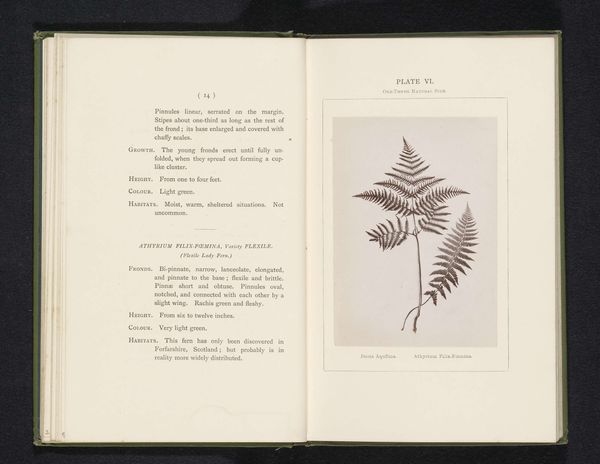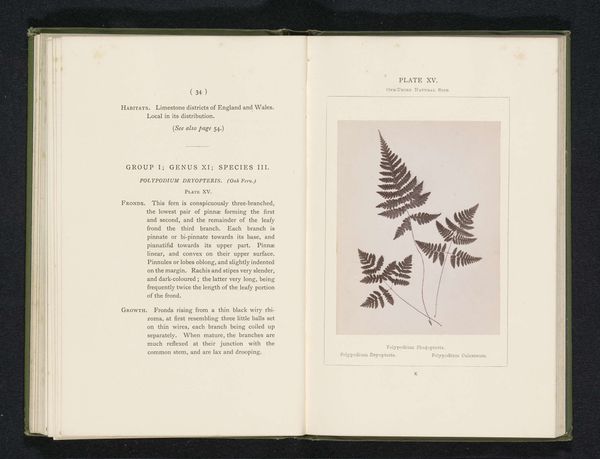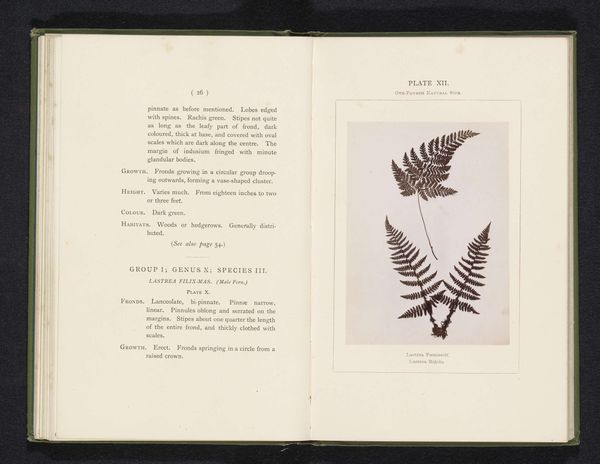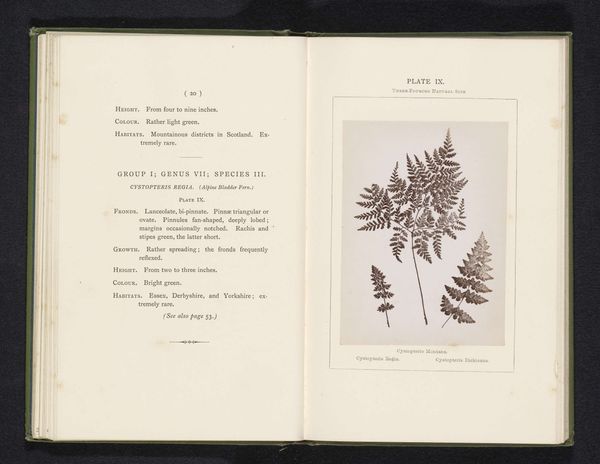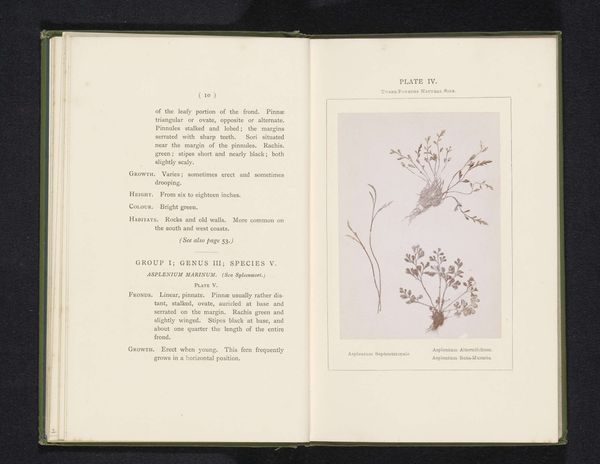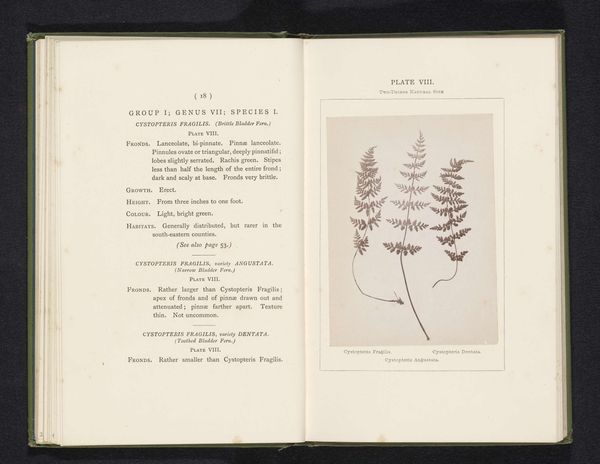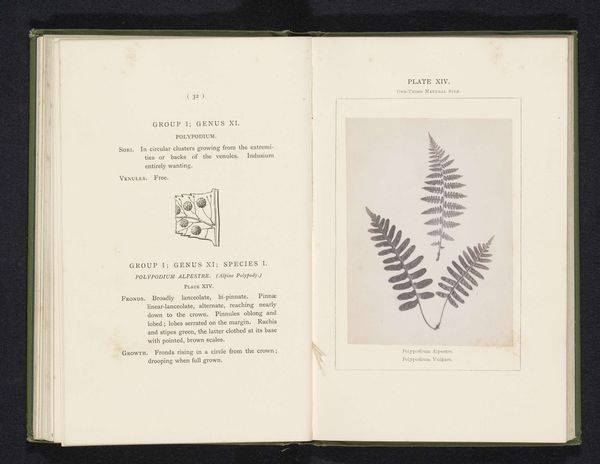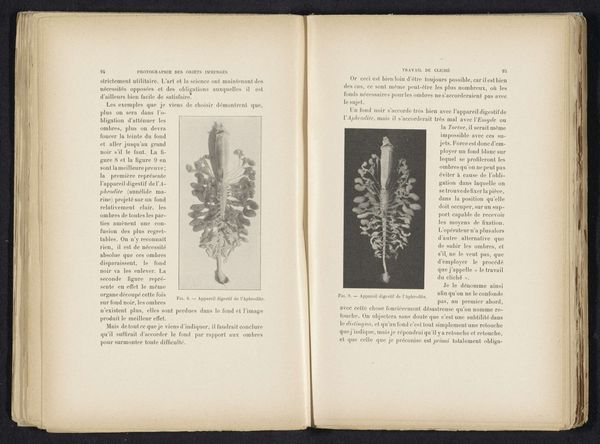
print, photography
#
script typeface
#
aged paper
# print
#
sketch book
#
hand drawn type
#
landscape
#
personal journal design
#
photography
#
personal sketchbook
#
hand-drawn typeface
#
journal
#
thick font
#
historical font
Dimensions: height 118 mm, width 88 mm
Copyright: Rijks Museum: Open Domain
Curator: Let's take a closer look at this page from a botanical study, “Bladeren van drie soorten streepvarens,” or "Leaves of three kinds of spleenwort," dating back to before 1877. It appears to be a photographic print carefully documenting different fern varieties. Editor: Immediately, I'm struck by the delicate beauty of it, almost spectral. The way the ferns are captured – isolated on the aged paper, their forms outlined in subtle tones – it’s more than just scientific documentation, it’s like preserving ghosts of the forest. Curator: I think the artist's approach highlights a pivotal intersection of art, science, and early photography. The painstaking process of collodion printing... consider the hands involved, preparing the glass plates, controlling exposure times. Each print a testament to careful labor, a physical embodiment of knowledge. Editor: Absolutely. You’ve got this interesting tension – the fern specimens themselves are presented almost clinically, right? Laid out for examination, each detail crisp. But then the surrounding page betrays its age and use. The slightly blurred text adds a tactile layer... like it's not just observed, but intimately handled. Curator: Right. There’s an element of control here; a study in how classification organizes our understanding of nature. But maybe an undercurrent also acknowledges nature's unruly abundance. The script type almost becomes part of the exhibit. What do you make of the choice of medium? Editor: Well, photography allowed for, theoretically, an objective capture, but also brought with it the aesthetic baggage of the process. These were the tools, these the materials—it dictated a certain kind of beauty born from both precision and the inevitable flaws. This really spotlights not only what ferns are, but what labor is too. Curator: I see it. Perhaps the creation was a conversation with time itself, between the present and the past of each page. Editor: Yeah, exactly. These ferns were once vital organisms in a vast ecosystem reduced to a shadow on a page. But within that act, those details help us think about a rich material history beyond its pure representation.
Comments
No comments
Be the first to comment and join the conversation on the ultimate creative platform.
